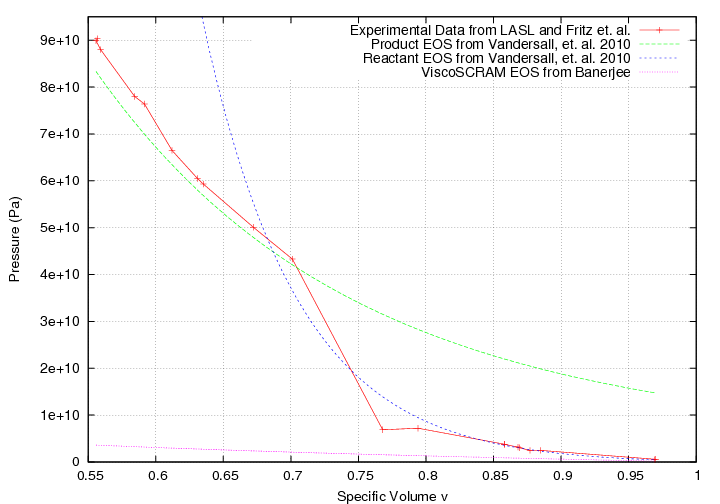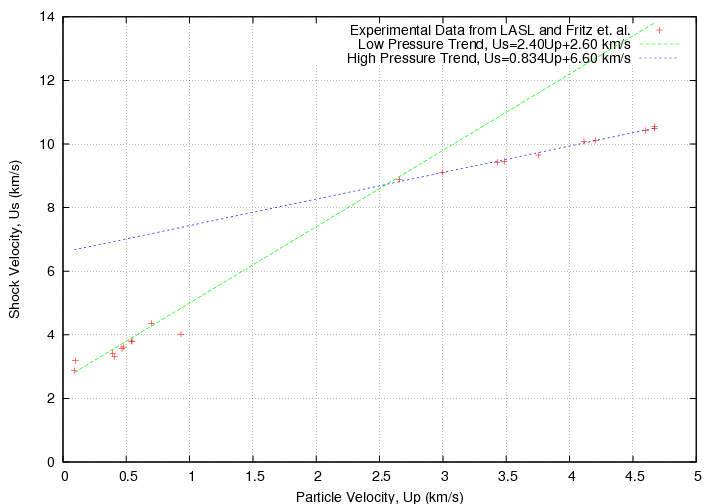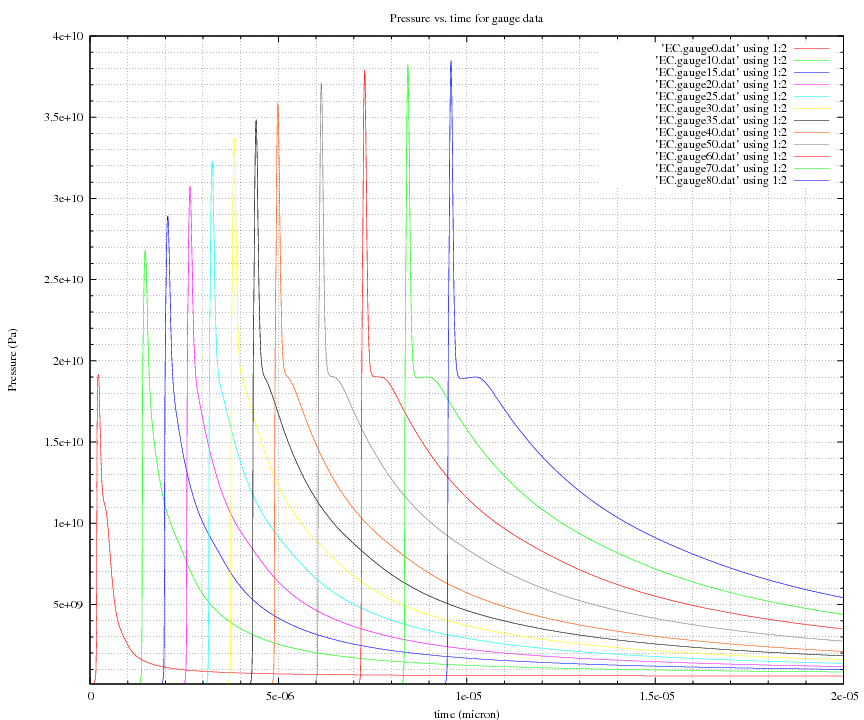Shock Data Comparisons to EOS
Plots
Figure 1: P vs. V/V0 for Equations of State used. Notice that Vandersall's Parameters give a CJ pressure of 40 GPa while the new fit gives one closer to 36 GPa. The specific
volume at which the CJ state is reached should be closer to 0.75. This is close, however, at higher pressures the product equation of state underestimates the pressure. The new
reactant fit no longer fits low pressure data as closely, but it represents the CJ state much better, giving much closer detonation velocity and pressure. ViscoSCRAM throws
in its own little bit of interesting nature as the next plot will show. Vandersall's Parameters from [1]. Data for v less than 0.75 come from LASL Explosive Property data [2].
All other data comes from Fritz et. al. [3]

Figure 2: Shock speed vs. Particle velocity. This graph shows the obvious concave down nature of the trend at high pressures. Is this the driving force that brings overdriven detonations
back into the regime of steady state? Note, the trends have been designed so that they cross at (in actuallity, close to) the CJ shock speed, 8800 m/s

Figure 3: Shows the pressure versus time at various points beyond impact. This plot shows a typical run of the detonation parameter fitting simulation. In this case, the impact velocity it
1000 m/s, well below the required input for 35 GPa equivalent stress. Buildup of peak pressure to steady state 38GPa is a consequence of underpowered impact. The detonation velocity in simulation
is 8720 ms/ which is withing 1% of the experimental velocity. CJ pressure is about 9% high, a well known consequence [4] of EOS fits from [1]. Note the quick release to about 19 GPa similar to
those seen in [1].

Conclusion
References
1. Vandersall, K.S., Tarver, C.M., Garcia, F., Chidester, S.K. On the low pressure shock initiation of octahydro-1,3,5,7-tetranitro-1,3,5,7-tetrazocine based plastic bonded explosives. J. Appl. Phys. 2010, 107.
2. Gibbs, T.R., Poplato, A. Eds. LASL explosive property data. Berkeley, University of California Press: 1980.
3. Fritz, J.N., Hixson, R.S., Shaw, M.S., Morris, C.E., McQueen, R.G. Overdriven-detonation and sound-speed measurements in PBX-9501 and the "thermodynamic" Chapman-Jouguet pressure. J. Appl. Phys. 1996, 80:11, pp. 6129-6141.
4. Menikoff, R. Comparison of Constitutive Models for PBX 9501. LA-UR-06-2355. March 2006.
DDT Validation Home
Home
Contact: josuf dot the dot uf at gmail


